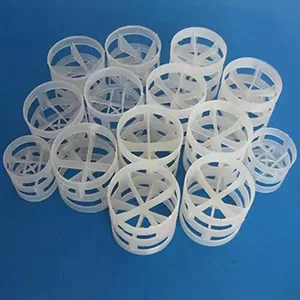pall ring packing is not corrugated structured packing. They belong to different types of packing and have significant differences in structure, classification, and application scenarios.

- Properties of Pall Ring Packing
Pall ring packing is a type of random packing (also known as dumped packing), and its structural characteristics are as follows:
It is an annular structure made of materials such as metal, plastic, or ceramic. Improved from raschig rings, it has many rectangular windows on the ring wall. The blades of the windows are bent toward the center of the ring, and the ends of the blades overlap with each other.
This structure can increase the specific surface area and porosity of the packing, improve gas-liquid distribution, and enhance mass transfer efficiency. It is widely used in processes such as distillation, absorption, and extraction.
- Properties of Corrugated Structured Packing
Corrugated structured packing is a type of structured packing, and its structural characteristics are as follows:
It is composed of many corrugated sheets with small holes. The direction of the corrugations forms a certain angle with the tower axis (usually 30° or 45°), and the corrugation directions of two adjacent sheets are opposite, forming a network structure.
The packing is neatly arranged in a certain regular pattern inside the tower. It has the characteristics of large specific surface area, low pressure drop, high mass transfer efficiency, and uniform gas-liquid distribution. It is suitable for scenarios requiring high separation efficiency, such as precision separation and vacuum distillation.
Summary
The core difference between Pall ring packing (random packing) and corrugated structured packing (structured packing) lies in their structural form and stacking method: the former is a random stacking of scattered individual pieces, while the latter is a regular arrangement of a unified structure. Therefore, they do not belong to the same type.

